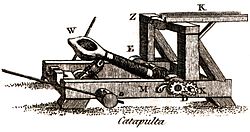Haryanka dynasty
This article needs additional citations for verification. (September 2015) |
Haryanka Dynasty | |||||||||||||||||
|---|---|---|---|---|---|---|---|---|---|---|---|---|---|---|---|---|---|
| 544 BCE–413 BCE | |||||||||||||||||
![The approximate extent of the Haryanka dynasty between the 6th and 5th century BCE.[1]](http://upload.wikimedia.org/wikipedia/commons/thumb/3/31/Magadha_Expansion_%286th-4th_centuries_BCE%29.png/250px-Magadha_Expansion_%286th-4th_centuries_BCE%29.png) The approximate extent of the Haryanka dynasty between the 6th and 5th century BCE.[1] | |||||||||||||||||
| Capital | Rajagriha later Pataliputra | ||||||||||||||||
| Common languages | Magadhi Prakrit Other Prakrits | ||||||||||||||||
| Religion | Buddhism[2] Jainism[3][4] | ||||||||||||||||
| Government | Monarchy | ||||||||||||||||
| King | |||||||||||||||||
• 544-492 BCE | Bimbisara | ||||||||||||||||
• 492-460 BCE | Ajatashatru | ||||||||||||||||
• 460-444 BCE | Udayin | ||||||||||||||||
• 444-440 BCE | Anuruddha | ||||||||||||||||
• 440-437 BCE | Munda | ||||||||||||||||
• 437-413 BCE | Nāgadāsaka | ||||||||||||||||
| History | |||||||||||||||||
• Established | 544 BCE | ||||||||||||||||
• Disestablished | 413 BCE | ||||||||||||||||
| |||||||||||||||||
| Today part of | India | ||||||||||||||||
The Haryanka dynasty was the first of the four dynasties of the Magadhan Empire in ancient India. Initially, the capital was Rajagriha. Later, it was shifted to Pataliputra, near present-day Patna in India during the reign of Udayin. Bimbisara is considered as the founder of the dynasty.
According to Buddhist text, the Mahavamsa, Bimbisara was appointed king by his father, Bhattiya, at the age of fifteen. This dynasty was succeeded by the Shishunaga dynasty.[5]
Governance
[edit]The governance structure of Haryanka dynasty is mentioned in ancient texts. They mention gramakas (village headmen) who headed village assemblies and mahamatras (high-ranking officials) who had executive, judicial and military functions.[6]
Historically, this period coincided with the Achaemenid conquest of the Indus Valley during the rule of Darius I from about 517/516 BCE.[7]
Rulers
[edit]Bimbisara
[edit]
Bimbisara reigned from 544 to 492 BCE. The extent of his kingdom is mentioned in Mahavagga. His advisors included Sona Kolivisa, Sumana (flower gatherer), Koliya (minister), Kumbhaghosaka (treasurer) and Jīvaka (physician). He was given the title of Seniya.[6]
Both Jain and Buddhist texts claim the king was a follower of their respective religions. Uttaradhyayana Sutra says he was a follower of Mahavira, whereas Sutta Nipata depicts him and his wife, Khema, as followers of Buddha. The latter further mentions he deputed Jīvaka to assist Buddha's Sangha.[6] He also married Chellana and Kosala Devi, sister of Pasenadi.[8]
According to George Turnour and N.L. Dey, the name of the father of Bimbisara was Bhatiya or Bhattiya, but the Puranas refer him as Hemajit, Kshemajit, Kshetroja or Ksetrauja and the Tibetan texts mention him as Mahapadma.[9]
Ajatashatru
[edit]
Ajatashatru reigned from 493 to 462 BCE.[6] He married Vajira, Kosala's princess.[10]
In some sources, Bimbisara was imprisoned and killed by his son and successor, Ajatashatru, under whose rule the dynasty reached its largest extent. Ajatashatru was contemporary with Mahavira (599–527 BCE) and Gautama Buddha (563–483 BCE). Ajatashatru fought a war against the Vajjika League, ruled by the Lichhavis, and conquered them.[10]
Udayin
[edit]Udayin or Udayabhadra is mentioned in Buddhist and Jain texts as the successor of Ajatashatru. The Puranas, however, mention him as the fourth king after Darshaka.[11]
Later rulers
[edit]Puranas mention Nandivardhana and Mahanandin as successors of Udayin. According to Buddhist tradition, Anurudhha, Munda and Nagadarshaka were his successors.[11]
List of Rulers
[edit]- Bimbisara (544–492 BCE)
- Ajatashatru (492–460 BCE)
- Udayin (460–444 BCE)
- Anuruddha (444–440 BCE)
- Munda (440–437 BCE)
- Darshaka (437 BCE)
- Nāgadāsaka (437–413 BCE)
Decline
[edit]Haryanka dynasty was overthrown by their Amatya (minister), Shishunaga who then established Shaishunaga Dynasty.[11]
See also
[edit]References
[edit]Citations
[edit]- ^ Schwartzberg, Joseph E. (1978). A Historical Atlas of South Asia. Chicago: University of Chicago Press. p. 145, map XIV.1 (a). ISBN 0226742210.
- ^ Hazra, Kanai Lal (1984). Royal Patronage of Buddhism in Ancient India. D.K. Publications. pp. 37–39. ISBN 978-0-86590-167-4.
- ^ Dundas, Paul (2 September 2003). The Jains. Routledge. ISBN 978-1-134-50165-6.
- ^ Rao 2012, p. 92.
- ^ Raychaudhuri 1972, pp. 97
- ^ a b c d Upinder Singh 2016, p. 270.
- ^ Beckwith, Christopher I. (2015). Greek Buddha: Pyrrho's Encounter with Early Buddhism in Central Asia. Princeton University Press. pp. 7–12. ISBN 978-1-4008-6632-8.
- ^ Upinder Singh 2016, pp. 270–271.
- ^ Raychaudhuri 1972, p. 105ff
- ^ a b Upinder Singh 2016, p. 271.
- ^ a b c Upinder Singh 2016, p. 273.
Sources
[edit]- Raychaudhuri, H.C. (1972), Political History of Ancient India, Calcutta: University of Calcutta
- Singh, Upinder (2016), A History of Ancient and Early Medieval India: From the Stone Age to the 12th Century, Pearson, ISBN 978-81-317-1677-9
- Rao, B .V. (2012), World history from early times to A D 2000, Sterling Publishers Pvt. Ltd, ISBN 9788120731882
